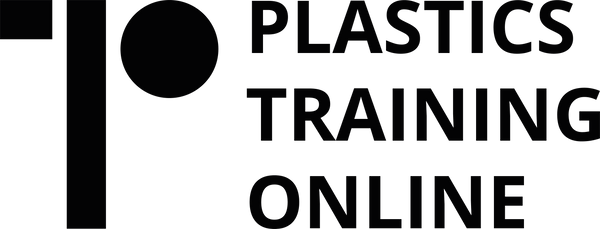Reading Blueprints
Reading Blueprints
The Reading Blueprints training course covers all types of blueprints used in industrial plants. Discusses reading blueprints outlining machine parts and machine drawings. Features blueprint drawings of a compound rest and a clutch-brake control. Examines hydraulic, pneumatic, piping, plumbing, electrical, air-conditioning, and refrigeration drawings. Introduces reading blueprints and sketching used in industrial plants. This course has no prerequisites. Reading Blueprints is available in online technical training and course manual formats.
Subscribe & Unlock Full Access
Gain immediate access to our library of expert-led training courses, labs, and support.
-
Description:
The Reading Blueprints training course covers all types of blueprints used in industrial plants. Discusses reading blueprints outlining machine parts and machine drawings. Features blueprint drawings of a compound rest and a clutch-brake control. Examines hydraulic, pneumatic, piping, plumbing, electrical, air-conditioning, and refrigeration drawings. Introduces reading blueprints and sketching used in industrial plants. This course has no prerequisites. Reading Blueprints is available in online technical training and course manual formats.
-
Included Courses:
Lesson 1 - Introduction to Reading Blueprints
Topics:
Detail drawings; Notes and dimensions; Assembly and pictorial drawings; Orthographic projections; Auxiliary views; Sections
Learning Objectives:
– Identify details, markings, and machine parts from an assembly drawing.
– Identify an object from an orthographic drawing.
– Identify elements located within the title block of a detail drawing.
– Explain why more than one orthographic projection is needed to show an object on a blueprint.Lesson 2 - Reading Machine Part Blueprints
Topics:
Simple machines; Screw threads; Heads; Rivets; Welds; Pins; Keys; Springs; Gears; Bearings; Belts and pulleys
Learning Objectives:
– Describe what a machine is, and explain what it does.
– Name the two basic methods of joining machine parts.
– Name and identify from an exhibit several types of threaded fasteners.
– Name the two basic methods of permanent joining.
– Identify gears, bearings, and belt drives on drawings.
– Identify types of screw threads from a specification.Lesson 3 - Reading Machine Blueprints
Topics:
Machine tools; Exploded views; Assembly and detail drawings; Drafting techniques
Learning Objectives:
– Name the main parts of a lathe.
– State the definition of an exploded view.– Identify an assembly drawing.– Identify a compound rest swivel on an assembly drawing.– Identify a specific part on an assembly drawing.Lesson 4 - Reading Sheet Metal Blueprints
Topics:
Sheet metal; Ventilation systems; Ductwork; Parallel, miter, and radial development; Extra metal for assembly
Learning Objectives:
– Describe the difference among coils, strips, and sheet metal.– Describe how a ventilation system works.– State the purpose of an arrow on a duct symbol.– Demonstrate how to lay out a development.– Define a radial development of a truncated pyramid.
Lesson 5 - Reading Building Blueprints
Topics:
Buildings and building sites; Symbols and conventions; Plant, site, and floor plans; Working drawings
Learning Objectives:
– Name building materials, given their standard symbols.– Explain how to find useful information on a flow diagram.– Explain how to find useful information on an industrial plant.– List the contents of a set of building drawings.– Describe the purpose of a structural drawing.
Lesson 6 - Reading Hydraulic and Pneumatic Blueprints
Topics:
Fluid systems; Pascal's Law; Multiplying forces; Pistons and cylinders; Fluid system components; Symbols
Learning Objectives:
– Name the components represented by common symbols on hydraulic and pneumatic drawings.– Name the components in a simple hydraulic power system.– Name the components in a simple pneumatic power system.– State Pascal's Law.– Discuss the purposes of the components of hydraulic systems.
Lesson 7 - Reading Piping and Plumbing Blueprints
Topics:
Piping and plumbing materials; Kinds of joints; Drawings; Joining metal pipes
Learning Objectives:
– State the definition of piping.– Explain why joints are sometimes brazed instead of soldered.– Explain how to assemble a screwed joint.– Identify different types of pipe joints.– Identify piping-system components shown in a single-line drawing.
– Define electrochemical corrosion.
Lesson 8 - Reading Electrical Blueprints
Topics:
Importance of electrical drawings; Electric power; Electrical drawings and wiring; Using electrical drawings
Learning Objectives:
– Identify different electrical symbols on a drawing.– Identify the power distribution panels in your plant.– Identify different types of conduit and cable.– Select the best electrical drawing to use when looking for a faulty circuit between the basement and the first floor.– Explain how electricity at 480 volts is reduced by a transformer to 120/240 volts.
– Define the terms voltage, current, and power.
Lesson 9 - Reading Air Conditioning and Refrigeration Blueprints
Topics:
Principles of refrigeration; Component drawings; Principles of air conditioning; Air conditioning systems
Learning Objectives:
– Explain how a refrigeration system works.– Describe the types of ac controls.– Name three kinds of condensers used in air conditioning systems.– Explain the difference between unitary and central air-conditioning equipment.
– Explain how to find useful information on a duct drawing.
Lesson 10 - Sketching
Topics:
Using and making sketches; Kinds of sketches; Orthographic, isometric, and perspective sketches
Learning Objectives:
– Name the four kinds of sketches.– Identify an isometric sketch.– Describe the appearance of a perspective drawing.– Discuss how to sketch straight lines and curved lines.– State the definition of a vanishing point
